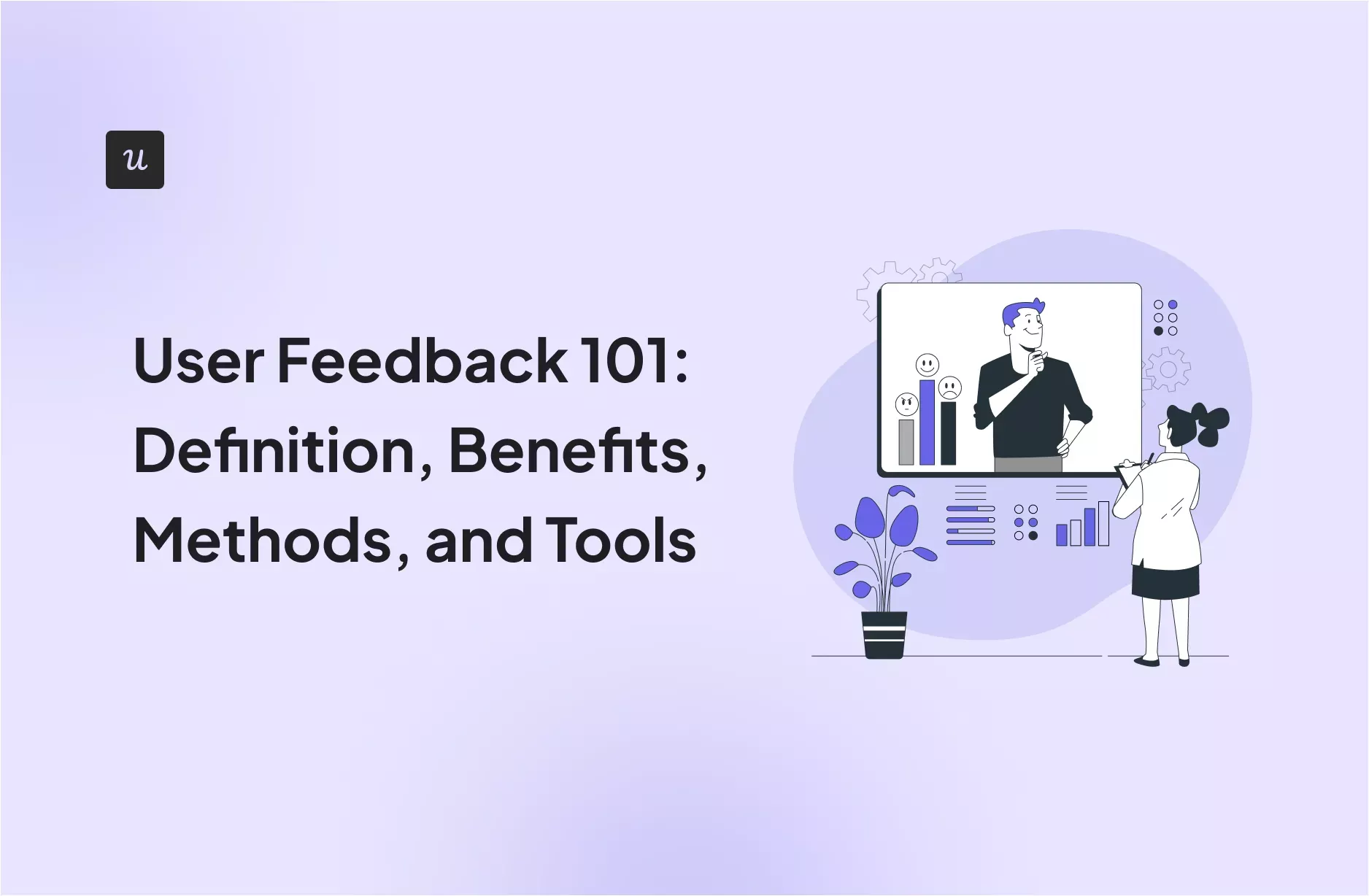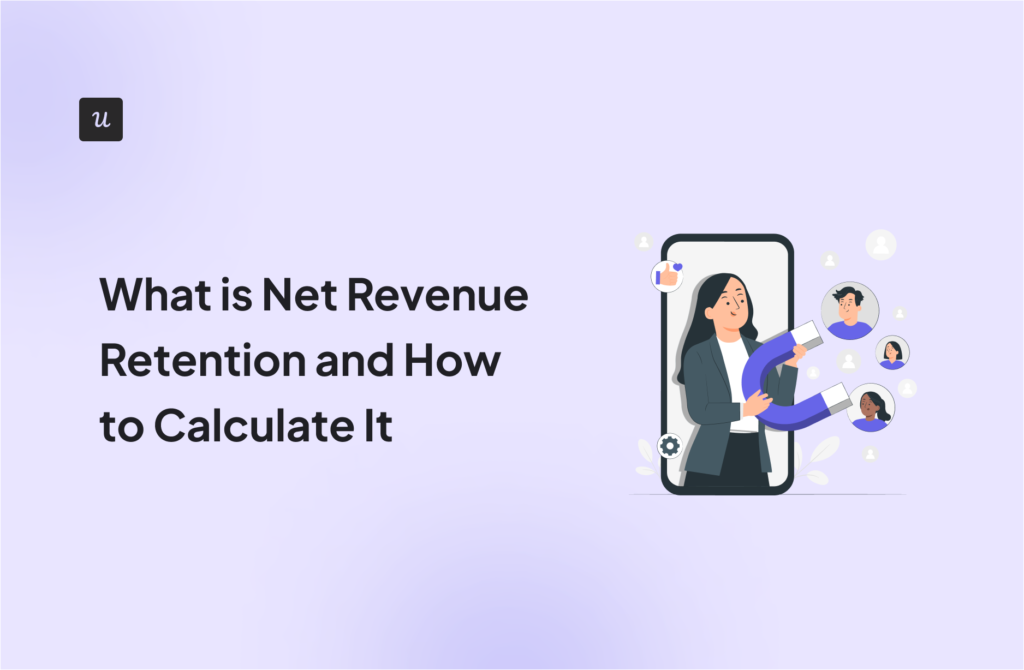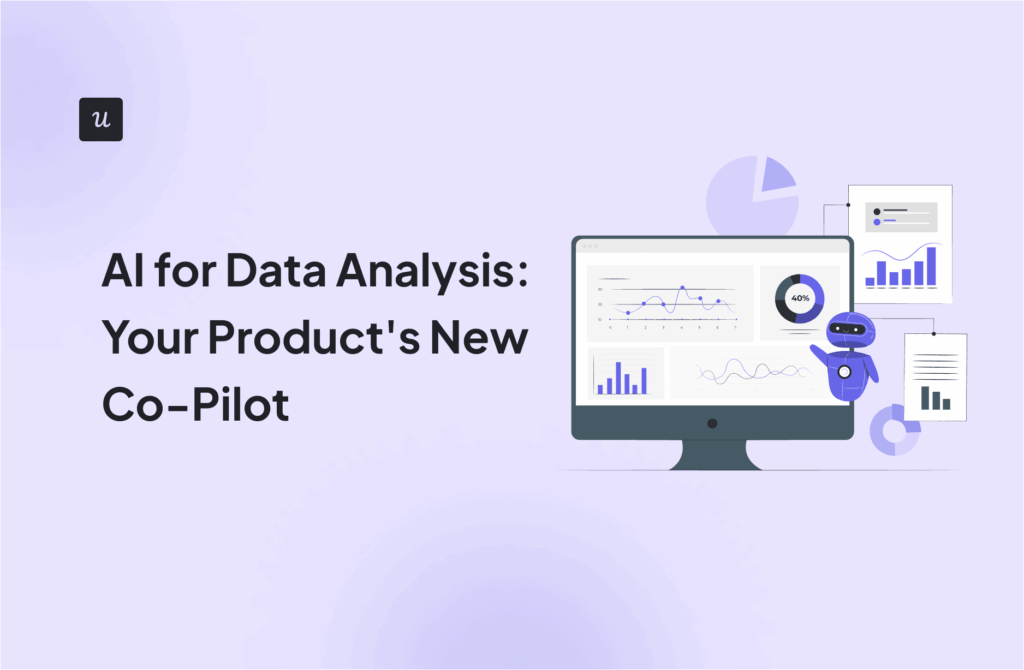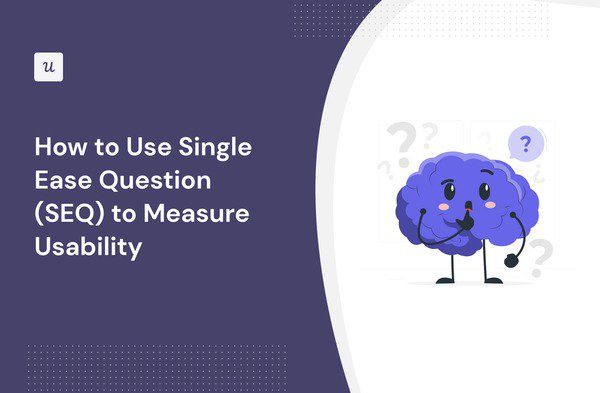
Any product manager can deploy a feature into production – but what’s the point of all that hard work without getting into the participant’s mind and understanding whether it’s usable or not?
The Single Ease Question (SEQ) can be your key to understanding usability. It’s an easy way to gain a simple version of the truth, cut through data, highlight problematic spots, and identify areas that could be made more user-friendly.
If you want to learn more about this tool for understanding feature usability and explaining any behavioral changes, let’s get into it!
Try Userpilot Now
See Why 1,000+ Teams Choose Userpilot

Single ease question summary
- A Single Ease Question (SEQ) is a simple yet effective method of quantitative usability testing. SEQ measures how easy or difficult a user finds different tasks on a scale of one to seven.
- Using the single ease question has some key advantages: it’s simple, fast, reliable, and sensitive to changes (i.e. you can issue them each time a user attempts a usability task).
- There are some drawbacks to consider, too: subjectivity and limited depth of understanding for complex products.
- You could do an SEQ after market research, to understand friction points, at vital touchpoints in the journey to understand satisfaction, and after feature launch to understand perceived usability.
- The average SEQ score for SaaS is 5.3 and 5.6.
- Best practices for effective SEQs: keep them plain and simple, launch them contextually, and combine them with other research methods (i.e. asking a follow-up question, session recordings where a user attempts a task).
- Of course, there are many more metrics to track: things like NPS, CSAT, task completion rates, and more. It’s about building a balanced view.
- Want to build SEQ surveys code-free? Book a demo with Userpilot to get started!
How are you currently measuring feature usability?
Understanding usability is the first step to improving it. The Single Ease Question (SEQ) is a great starting point.
What’s your biggest challenge with usability testing?
A common issue is collecting feedback at the right moment. Contextual surveys, like a Single Ease Question survey, can solve this.
What is your primary goal with improving usability?
Whether it’s activation or adoption, a simple Single Ease Question can give you quick, valuable insights.
Ready to see how easy usability testing can be?
Userpilot lets you build and target a Single Ease Question survey without any code. See exactly where users struggle and get the insights you need to improve your product experience.
What is the single ease question (SEQ)?
A Single Ease Question (SEQ) is an incredibly simple yet effective method for measuring user experience with a system usability scale. They enable you to quickly assess the usability of a product. They’re typically used after a user completes a specific task.
The SEQ asks users directly:
“Overall, how difficult or easy was it to perform this task?”
Users then respond to this question on a 7-point Likert scale ranging from 1 (very difficult) to 7 (very easy).
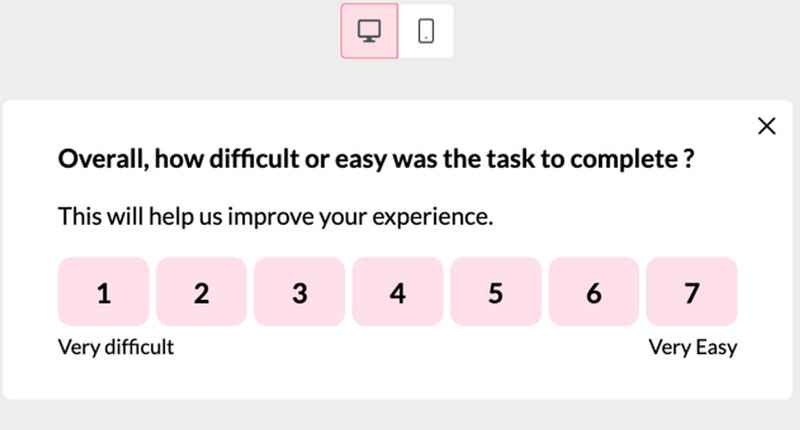
Pros and cons of using the single ease question (SEQ)
Now we’ve covered what an SEQ is, let’s unpack the pros and cons.
Pros:
- Simple, easy, and cheap to carry out. The SEQ is a single question with a clear and concise format, making it very simple for participants to understand. You can use it to get a clear indication of what the results mean and generate actionable insights.
- Accurate, reliable, and specific. Because the data is gathered immediately after completing a task, it’s been found to be just as accurate as other usability methods to build a general sense of perceived usability.
- Efficient. SEQ can be administered quickly and efficiently, making it a time-saving option for usability studies. It usually elicits a high response rate.
- Sensitive to changes. SEQ can detect small changes in usability. It can be used to measure the impact of design changes or to compare different versions of your product over time.
Cons:
- Limited depth of understanding. SEQ provides a general overview of usability but may need to be combined with other research methods to draw out in-depth qualitative insights into the specific reasons why users found a task difficult or easy.
- Subjectivity. Unlike other forms of usability analysis (i.e. something generating more quantitative data), using an SEQ depends on how a user perceives cognitive tasks – this can be inherently unreliable.
- May not be sufficient for complex products. Although SEQ results are perfectly reliable and can help you identify areas for improvement, for particularly complex products you might want to conduct other tasks generating more usability information.
When should you use the single ease question?
When would you utilize a single ease question template versus other sorts of usability studies?
During market research to identify user pain points
UX researchers often use SEQ surveys to conduct market research with customers using a competitor’s product.
It can help unpack how users feel about given features, which pain points remain unresolved, and generate ideas for new feature development (i.e. it at least makes sure they’re experimentally validated).
After quantitative usability testing to identify friction points
If you want to get granular into understanding perceived workload, you could use an SEQ after every step of multi-stage usability tests. It’ll show you exactly where users are struggling, areas of perceived ease, and areas of perceived difficulty (or friction).
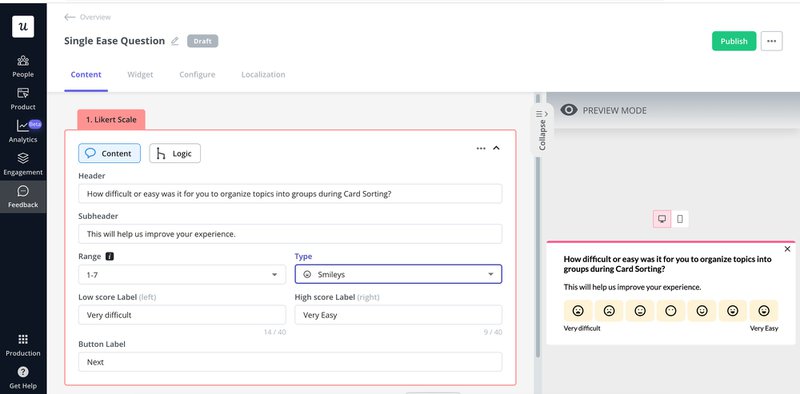
Upon vital user experience touchpoints to gauge customer satisfaction
Another opportunity to trigger this question is closely tying it to key steps in the customer journey.
That data will help you to reveal how important product experiences meet user expectations. It can show you how a user’s experience changes over time: the simplicity of an SEQ can generate valuable data.
Some examples of distinct touchpoints you might want to target:
- Completing the onboarding process.
- Interaction with a customer service agent.
- Interacting with key features for the first time.
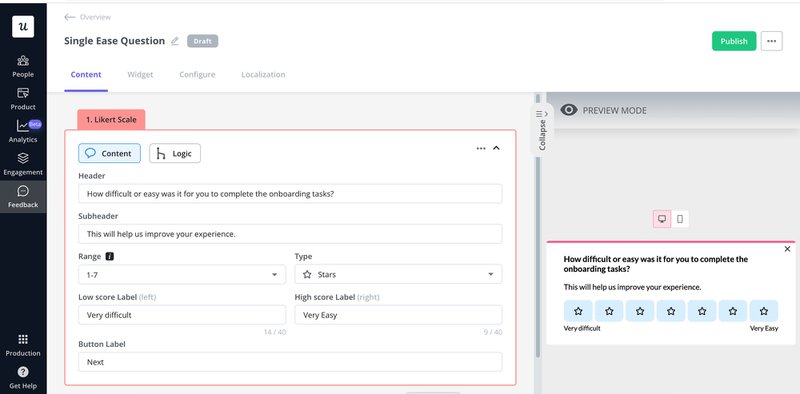
After product launches to measure the perceived usability of a new feature
You can also utilize this question to gather insights immediately after a new feature launch to verify there are no major bugs or other usability issues.
The average score from this simple but powerful subjective mental effort questionnaire can be a surprisingly effective tool for understanding exactly how a new feature lands.
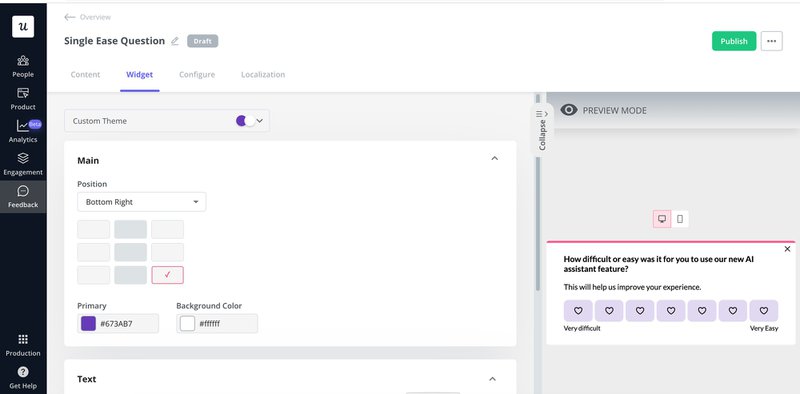
What’s the average SEQ score?
As we’ve covered, the SEQ score is a fairly standard user experience metric. Understanding the average response across the industry is an important benchmark for your customer success manager to bear in mind.
So what is the average?
Tracking more than 400 tasks across 10,000 users, the average SEQ score found by MeasuringU was between 5.3 and 5.6.
Best practices for collecting insights with SEQ
How do you ensure you gather the most effective user responses and make the best use of your SEQ scores?
Next up, some practical tips.
Use plain and simple language
The fastest way to disengage users is to confuse or frustrate them: simplicity is key. They’ve already got all their tasks to deal with, and you don’t want to add to their to-do list.
So, keep the questions easy to understand. Avoid jargon or complex terminology that might confuse participants.
Trigger the SEQ question contextually to get good insights
Next, don’t randomly dump the single ease question in.
If you think about the peaks and troughs in the emotional experiences of your users going through a journey, you’ll get a much more effective source of data if you contextually launch your surveys as closely to task completion as you can.
This sort of real-time feedback is often far more reliable than other metrics – it’s proven to be just as accurate as more detailed qualitative studies.
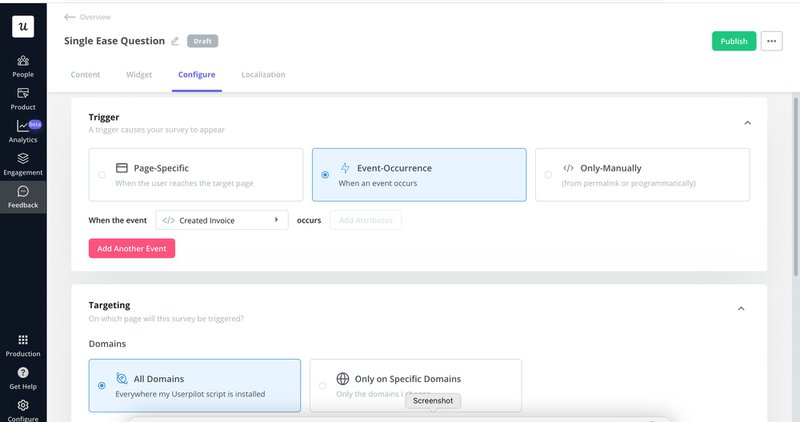
Use other user research methods to qualify the SEQ data
UX research is a fast-growing and evolving discipline. Understanding the way people interact with software interfaces and the journeys around them is undeniably valuable.
While SEQ surveys have their positives, the fact they are subjective and self-reported doesn’t tell you why. There are other ways of collecting data:
- Follow-up question. Immediately follow the SEQ with a relevant ‘explainer’ question.
- Post task questionnaires. You could launch into more detailed questionnaires to understand the ‘why’ behind an answer.
- Usability studies. These are a type of test session (or psychological research) where you observe users working through an activity and monitor task completion rates.
- Session replays. Watch an attempted task completion journey back to understand where users struggle.
- Product analytics. The only quantitative data we’re talking about on this list, analytics gives you cold hard facts and data about how users are interacting with your product.
How does this look in practice? People may perceive a task to be easy, but your analytics may show a large number of people dropping off or failing to click through to the next step.
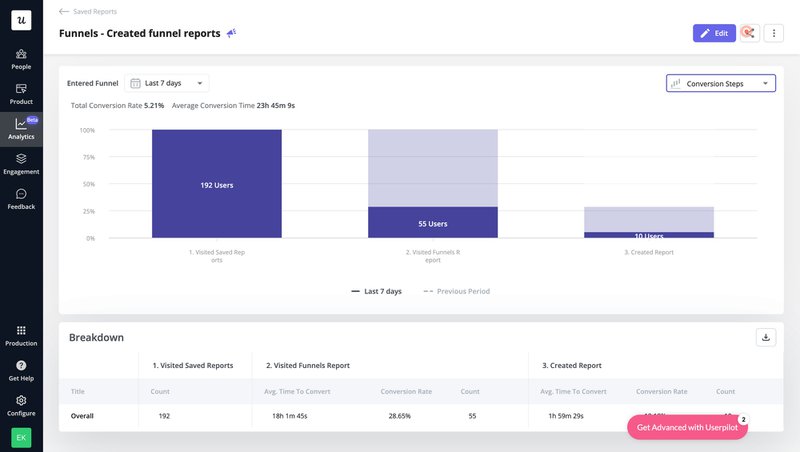
Other usability metrics to track along with the SEQ score
As mentioned earlier, there are other usability metrics you might want to monitor:
- Customer satisfaction score. This takes the form of a survey where users rank their satisfaction from 1 to 5.
- Net Promoter Score. A proxy for customer loyalty where users select how likely to recommend the product they are.
- Subjective mental effort. A single-question survey that asks respondents to rate their subjective mental effort (i.e. how they perceive the difficulty).
- After-scenario questionnaire (ASQ). A 3-question scale is used to assess how difficult a user-perceived task has been as part of a usability test.
- Task completion rate. What proportion of all the tasks in a workflow can a user complete?
Conclusion
That just about wraps things up!
Hopefully, you now have a rock-solid understanding of what an SEQ is and how you can deploy it to build a quick and effective understanding of usability.
Want to build product experiences code-free? Book a demo call with our team and get started! Check out the banner below for more information.


